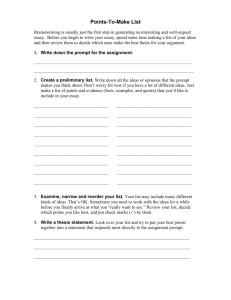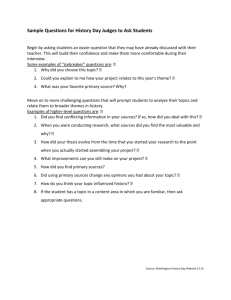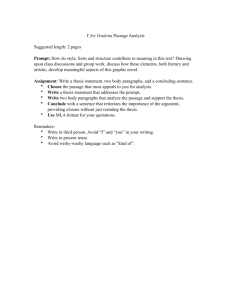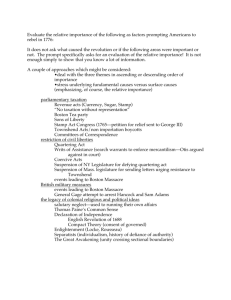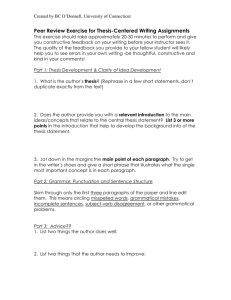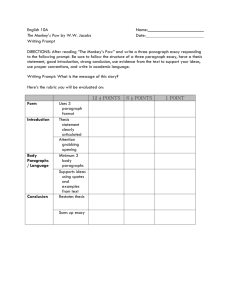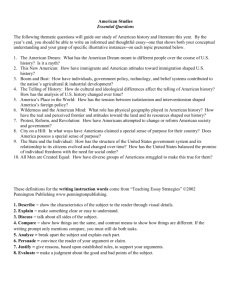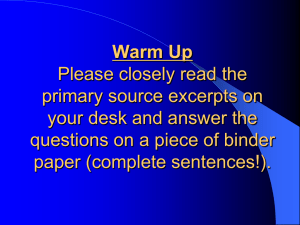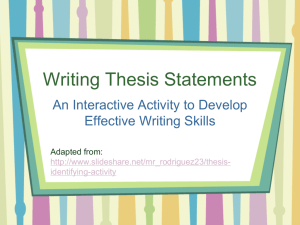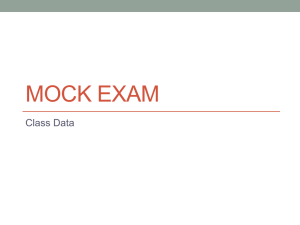Fall 2012 APUSH Performance Final Study Guide Performance
advertisement
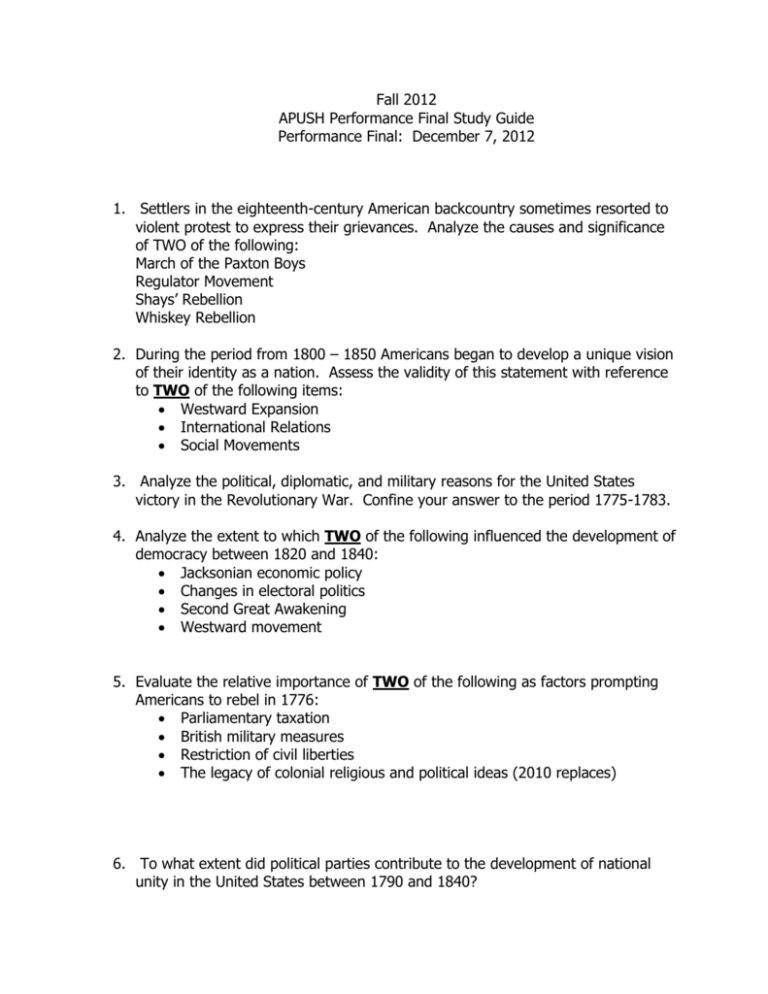
Fall 2012 APUSH Performance Final Study Guide Performance Final: December 7, 2012 1. Settlers in the eighteenth-century American backcountry sometimes resorted to violent protest to express their grievances. Analyze the causes and significance of TWO of the following: March of the Paxton Boys Regulator Movement Shays’ Rebellion Whiskey Rebellion 2. During the period from 1800 – 1850 Americans began to develop a unique vision of their identity as a nation. Assess the validity of this statement with reference to TWO of the following items: Westward Expansion International Relations Social Movements 3. Analyze the political, diplomatic, and military reasons for the United States victory in the Revolutionary War. Confine your answer to the period 1775-1783. 4. Analyze the extent to which TWO of the following influenced the development of democracy between 1820 and 1840: Jacksonian economic policy Changes in electoral politics Second Great Awakening Westward movement 5. Evaluate the relative importance of TWO of the following as factors prompting Americans to rebel in 1776: Parliamentary taxation British military measures Restriction of civil liberties The legacy of colonial religious and political ideas (2010 replaces) 6. To what extent did political parties contribute to the development of national unity in the United States between 1790 and 1840? 7. Analyze the ways in which the political, economic, and diplomatic crises of the 1780s shaped the provisions of the United States Constitution. Self Evaluation 8-9: 5-7: 3-4: 1-2: Strong, well-developed thesis which clearly addresses the question. Deals with the MOST significant issues and trends relevant to the question. Abundant, accurate specifics; may contain insignificant errors. Depending on what is called for, demonstrates well reasoned analysis of relationship of events and people, cause and effect, continuity and change. Covers all areas of the prompt in approximate proportion to their importance. Effective organization and clear language. Has a valid thesis; deals with relatively significant issues and trends. Some accurate specific information relevant to the thesis and question. Analyzes information; uses data to support opinions and conclusions. Recognizes historical causation, change and continuity. Adequately addresses all areas of prompt; may lack balance. May contain a few errors; usually not major. Adequately organized; generally clear language; may contain some grammatical errors. Thesis may by absent, limited, confused, and/or poorly developed; may take a general approach to the topic, failing to focus on the question; position may be vague or unclear. Superficial or descriptive data; limited in depth and/or quantity. Limited understanding of the question; may be largely descriptive. Adequately covers most areas of the prompt; may be largely descriptive. May contain major errors. May use weak organization; grammatical errors may hinder comprehension. Usually has no discernable thesis or simply restates the question. Superficial, inappropriate or erroneous information; or information limited to a small portion of the prompt. Analysis may be absent or fallacious. May contain numerous errors, both major and minor. May cover only portions of the prompt; refers to subject but does not address the prompt. Erratic organization; grammatical errors may frequently hinder comprehension. Instructor Evaluation
